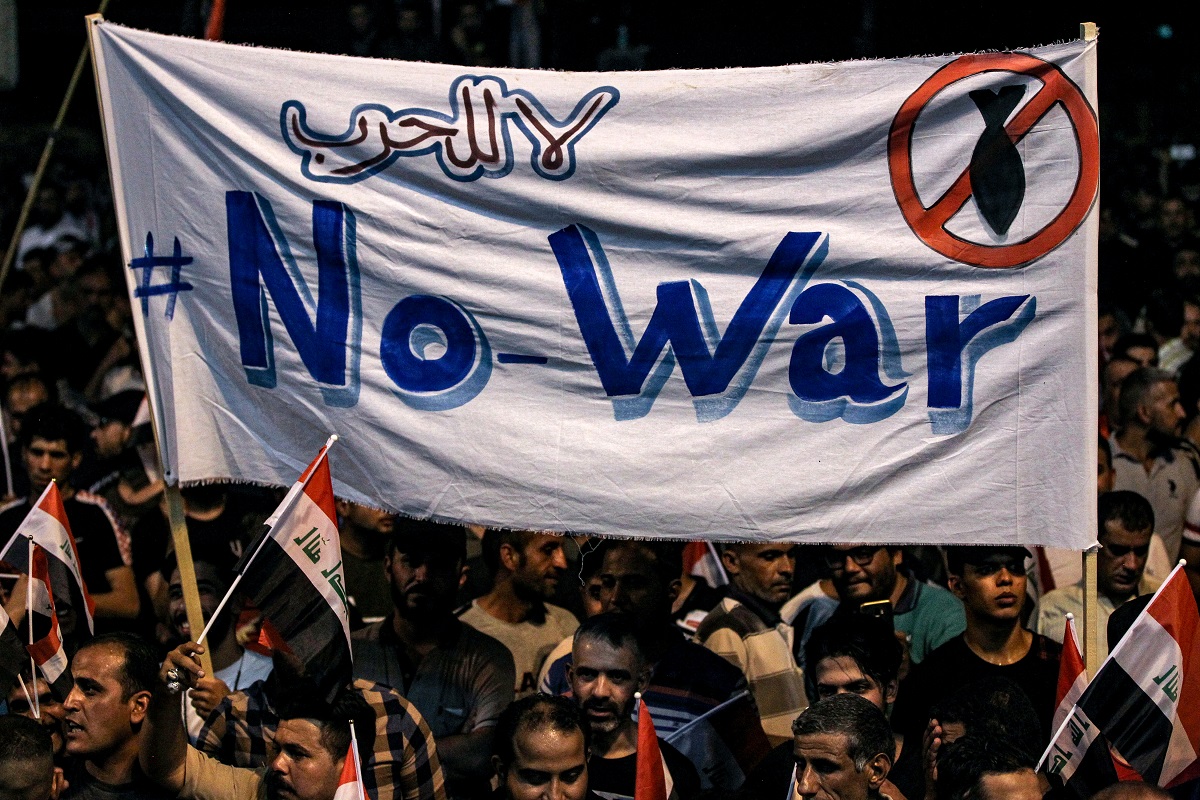Belligerence has followed bonhomie at the golf course.
Donald Trump’s tweet from his golf club in Sterling, Virginia, has served to exacerbate tensions in the Gulf in the aftermath of the attack on two oil tankers of Saudi Arabia, posing a threat to the desert kingdom’s economy.
Advertisement
With Saudi Arabia and Iran ranged on either side of the battlefront as it were, the US President has advanced a decidedly incendiary message following disavowals of intent from both sides. With the possible exception of Trump’s hawkish national security adviser, John Bolton, who had played a key role in instigating the invasion of Iraq under George Bush, the President’s supporters by and large do not want a war with Iran.
Nonetheless, there is little doubt that he has issued one of his most direct threats yet to Tehran, warning that “if Iran wants to fight, that will be the official end of Iran”. The language is decidedly aggressive. The White House has not said what is behind its claim of an increased threat, though there is a “great deal of risk”. according to the Intelligence fraternity.
The US intelligence believes that Iranian commercial vessels have carried missiles and ammunition, which indicates defensive preparations against a US attack. The renewed ferment in the Gulf appears to have boiled down to a possible conflict between the US and Iran.
Yemen doesn’t quite figure in the overall construct. Saudi Arabia is the major US ally in the region. Four oil tankers, two of them Saudi, were attacked off the coast of the United Arab Emirates last week. Iran-allied rebels in Yemen claimed a drone attack on a Saudi oil pipeline. Since then, multilateral tension ~ between the US, Saudi Arabia, Iran, and Yemen ~ has ramped up pressure to an alarming degree.
The US has sent an aircraft carrier strike group and cautionary moves include the evacuation of personnel by the oil firm, ExxonMobil, and a warning from the US to commercial air traffic operators, underlining the increased risk in the region.
Adel al-Jubeir, Saudi Arabia’s foreign minister, has let it be known that his country also “does not want war … but at the same time, if the other side chooses war, the kingdom will fight this with all force and determination”. The clash of shields may not happen quite yet, but the war drums are audible and the war clouds faintly visible.
The attack on the oil tankers was an offensive against the bedrock of the desert kingdom’s economy, embedded in petro-dollars. Not that President Trump wants a regime change in Tehran. Nor for that matter is he itching for a war with Iran.
In his reckoning, the “greatest foreign policy mistake probably in the modern age” was President Bush’s decision to invade Iraq. Sixteen years later, there is a lesson to be drawn from the uncharacteristic candour of the incumbent, indeed the horrific events of March 2003.









